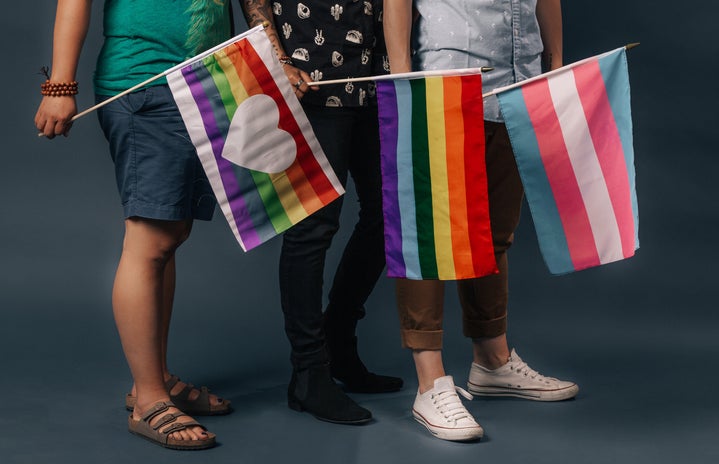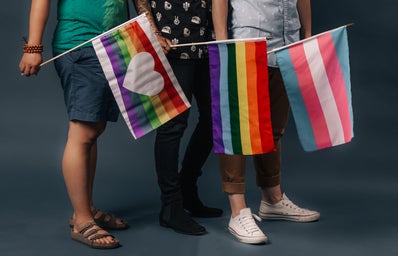Sexuality is a very fluid concept. Nowadays, more than 30 variations of sexuality and gender are registered with the Brazilian LGBT Association (ABLGBT). At first, the acronym was just LGBT, which grew into LGBTQIAP+. What we can see from the beginning is the letter B which, in the acronym, means Bisexual – no, B is not for biscuits. Even though, more and more, this identification of sexuality, in particular, is increasingly on the agenda due to the growing complaints of biphobia.
Bisexuality is an orientation still not widely understood and accepted – neither by heterosexuals nor by homosexuals. Often, bisexuality is related to infidelity and lack of affective responsibility. Furthermore, when a bisexual enters a relationship, it is very common to see society as a whole erasing bisexuality to define what the person is. If you are bi and enter into a same-sex relationship, then you are either gay or lesbian. If you enter into a heterosexual relationship, then you are heterosexual. In any case, you are a confused person. If you are more with the opposite sex than with the same, it is called a “bi party”. If you are more like the same than the opposite, you are closeted gay. In no case are you simply bi.
In practice, what is bisexuality?
Let’s start with the concept of sexuality. The World Health Organization defines sexuality as “an energy that motivates us to find love, contact, tenderness, and intimacy; it is part of the way we feel, move, touch and are touched, it is being sensual and at the same time being sexual”. Considering this, bisexuality represents people who are emotionally, romantically or sexually attracted to people of more than one gender. This is where the problem starts.
Like everything that differs minimally from what is imposed by the patriarchal and heteronormative society, along with new sexuality, a new prejudice arises: biphobia. Thinking that bisexuality is just a phase, that the bisexual is indecisive, unfaithful, or wants to be with absolutely everyone he comes across, just because he is bisexual, are examples of biphobia. It is not “confusion”, “indecision”, “fashion” or “promiscuity”. Bisexuality is a sexual orientation and, like the many others and gender identities that make up the acronym LGBTQIA+, it has its particularities.
The bisexual spectrum
Like heterosexuality and homosexuality, being bisexual is a unique identity of its own. Making an analogy, if being straight is like chocolate ice cream, and being gay is vanilla ice cream, being bisexual is not a half-and-half cone, it is strawberry ice cream: its flavor, is unique, and with its own characteristics. However, you can’t put all bisexuals in the same box and demand that everyone to be equal. That’s why we talk about the bisexual spectrum.
The spectrum is like a preference ruler, which marks internally if a person, at that specific moment, feels more focused on a relationship (loving or just physical) with a certain gender. There are bi people who very much prefer those who are of the same gender, and others who are of the opposite gender. Some can no longer understand each other because of the fluidity of their attractions: for long periods they only want men and, in others, they only want women.
Some people prefer specific genitals but are so attached to the logic that penis = man and vagina = woman that they sometimes end up reproducing transphobic discourses. Some people don’t have preferences because they don’t distinguish gender. Some people are completely neutral about attraction, even if they differentiate something (bodies, features, etc.). In short, bisexuality does not follow a pattern for all people – and the same person will not necessarily follow the same pattern forever. To learn more about the spectrum of sexuality, check out the video “Homosexuality” by Youtuber Pirulla.
At the end of the day, am I any less bi for being in a heteronormative relationship?
Let the drums roll…
Tarararararara
NO!!!!!
No, you’re not less bi for being in a heteronormative relationship. Not even if you’re in a homonormative relationship. Not even if this year you’ve kissed 10 men and 3 women or the other way around. A bisexual is a person who feels attraction, has desires, and establishes sexual desires with both sexes. We must initially relate bisexuality to sexual desire, not to a marital relationship. Separating desire from the marital relationship is important to didactically understand this concept and not fall into cultural issues and social impositions.
At the end of the day, the Bisexual ID is a great joke that we from the bi community have found to make fun of anyone who wants to believe that the B is for Beyoncé, bubblegum, or BestAlbumOfTheYearIsMidnightsByTaylorSwift. At the end of the day, what every bisexual wants is one simple thing that has been complicated for nothing: belonging.
————————————————————————————
The article above was edited by Giullia Cartaxo.
Liked this type of content? Check out Her Campus Casper Libero for more!


